Demolitions
for Czechoslovakia’s architectures between 1960s–1980s is a controversial subject. The public may still regard it negatively, owing to a lack of information or an adverse experience with the country’s regime before the Velvet Revolution.
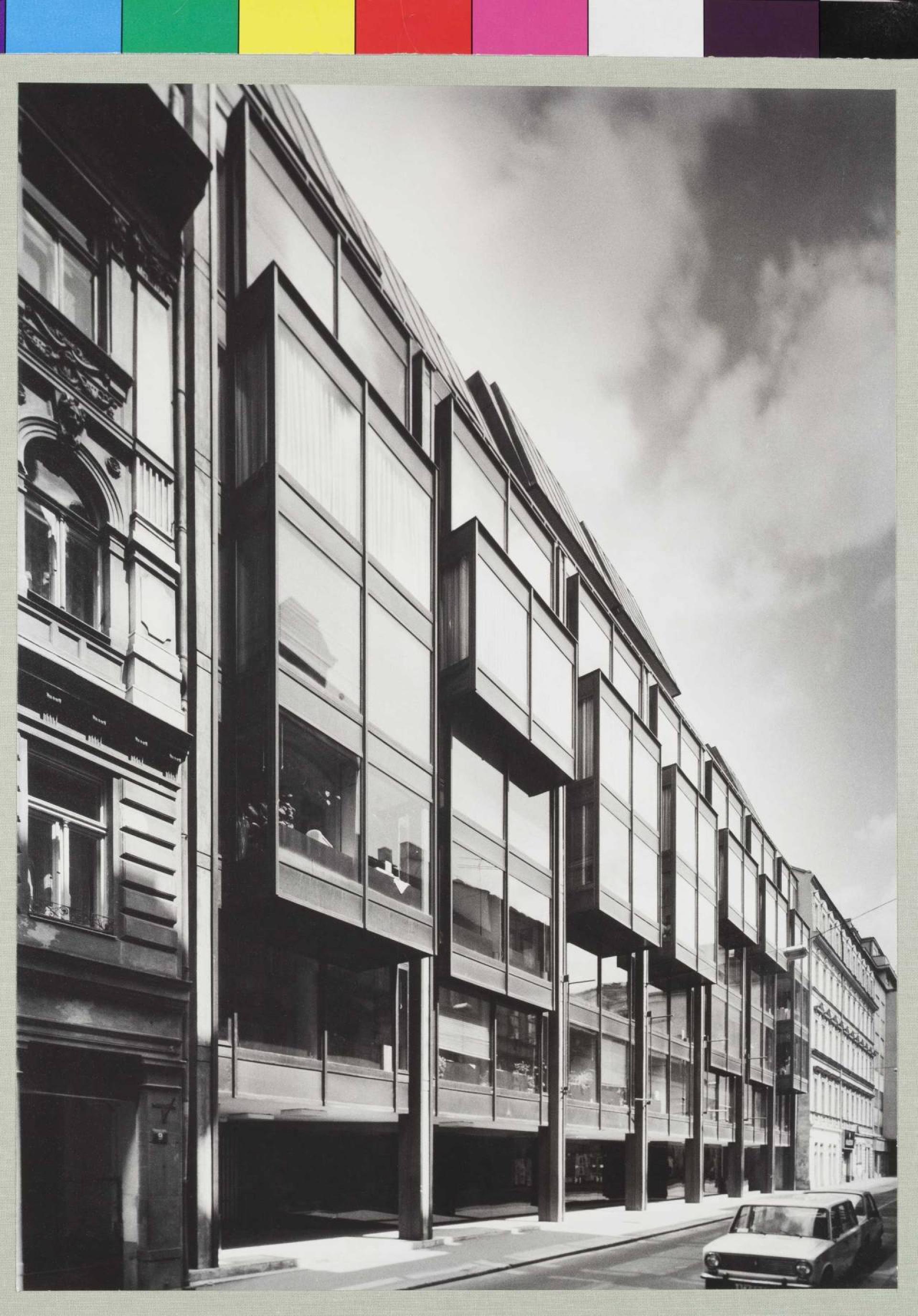
Omnipol Building by Zdeněk Kuna, Zdeněk Stupka, Milan Valenta, Josef Zdražil, Ladislav Vrátník (1974–1979) | Photo © Kamil Warta, National Gallery Prague
Helena Doudová, the curator of the exhibition NO DEMOLITIONS! Forms of Brutalism in Prague, presents Brutalism buildings in Prague that prominently enter the urban scene. The nearly two hundred and fifty original architectural plans, photographs and models come mostly from the Architecture Collection of the National Gallery Prague. The examples of the most progressive architecture works feature the Kotva Department Store, the former Central Telecommunications Building at Žižkov (marked for demolition), the former Federal Assembly, Hotel Intercontinental and Barrandov Bridge and the recently demolished Transgas complex.
“No Demolitions!” is a quite straightforward title for an exhibition. What is happening in Prague and the Czech Republic, that led you to organize this exhibition and choose this title?
HD: With the exhibition we intended to highlight the values of late modern and brutalist architecture in Prague that becomes either demolished or refurbished beyond the point of recognition. Some of the buildings ceased to exist throughout the one year since we started working on the topic. We intended to show that the buildings by the architects like Karel Prager, Karel Filsak, the husband-and-wife team Machoninovi and Šrámkovi have built edifices, which are comparable with the most prestigious architecture production of the former Western Europe and the US.

Center of Home Design by Věra Machoninová, Vladimír Machonin (1971–1981) | | Photo © Kamil Wartha, National Gallery Prague
The Trade Fair Palace is an exclusive choice for an architectural exhibition; why did you choose this location?
HD: It is a building with strong symbolic meaning, a real jewel of functionalist architecture but at the same time it is difficult to present an exhibition due to technical parameters as light because paper plans and photography are very sensitive to it. The gallery floor plan worked quite well in a sequence, so the exhibition concept fit quite well. Ondřej Císler created vitrines with colored large plans and prints from the architecture collection of the National Gallery in Prague. Plans are contrasted with the photography of the deteriorated state of the buildings by Olja Triaška Stefanović.
In many countries of the former East Bloc, protecting Late Modern architecture creates a specific challenge, as these buildings are widely associated with the negative perception of the political era they were created in. This can very easily lead to iconoclastic gestures, as we have seen in the case of Skopje 2014. What can art history, museology and the wider profession do against this phenomenon?
HD: The negative public opinion toward these buildings is a cluster of multiple problems. One general problem not only in the Central or Eastern Europe is the poor long term maintenance, which makes the buildings appear even more brutal than intended in the architecture design. As the exhibition shows, the architects were thinking of the public space around these buildings, inserted artworks and parks, as a number of designs show.
Secondly, the political associations are difficult, but also controversial to me. I very much think that the socialist state invested into large public buildings before 1989 and did provide socially accessible culture programs, sports, etc. So to me the brutalist buildings are valuable and authentic through their aim to belong to the community but also undercover propaganda. One can’t change people’s memories or their experience with communism, but it’s not the fault of buildings that were ironically planned in the golden sixties in the time of the political détente in Czechoslovakia.

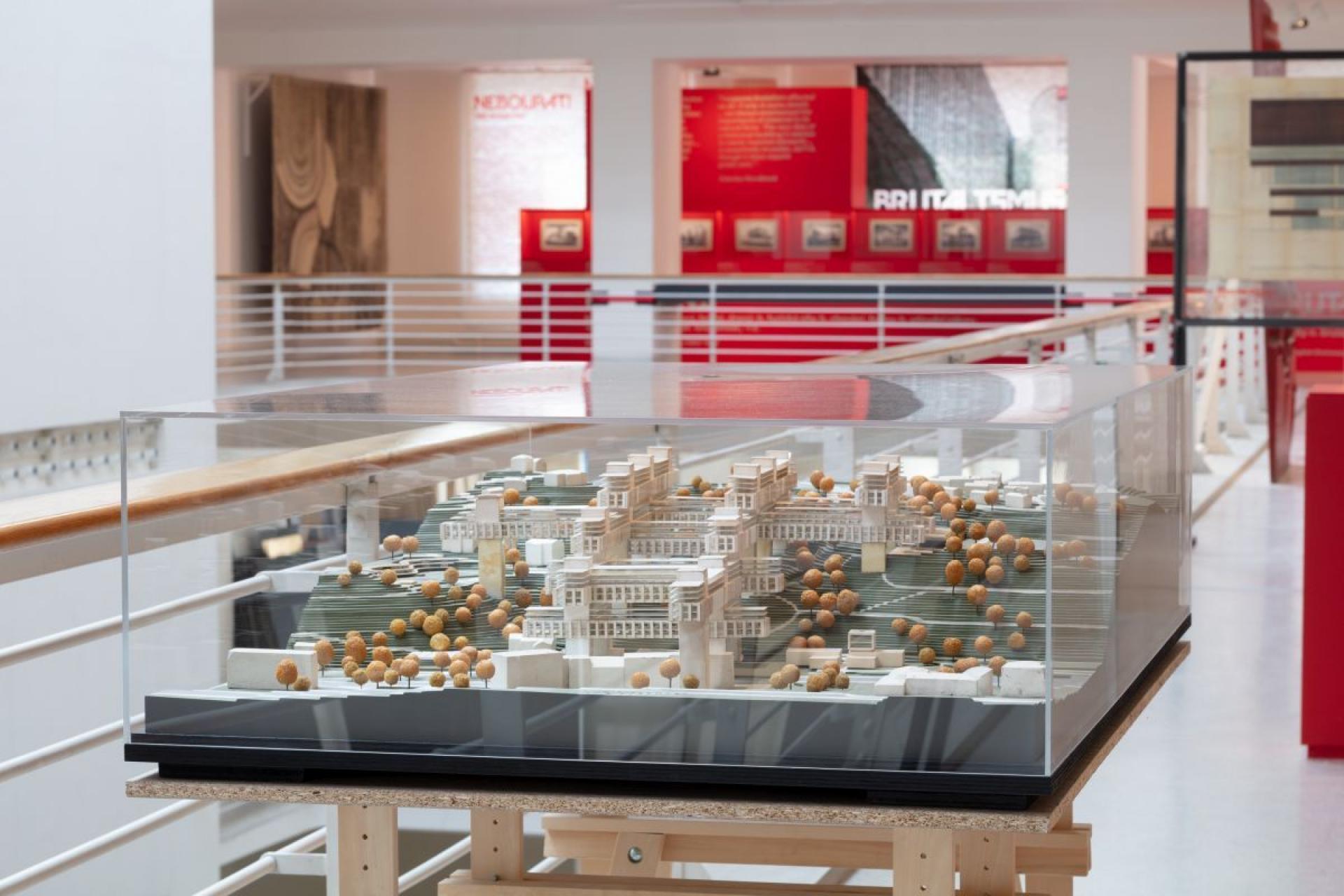
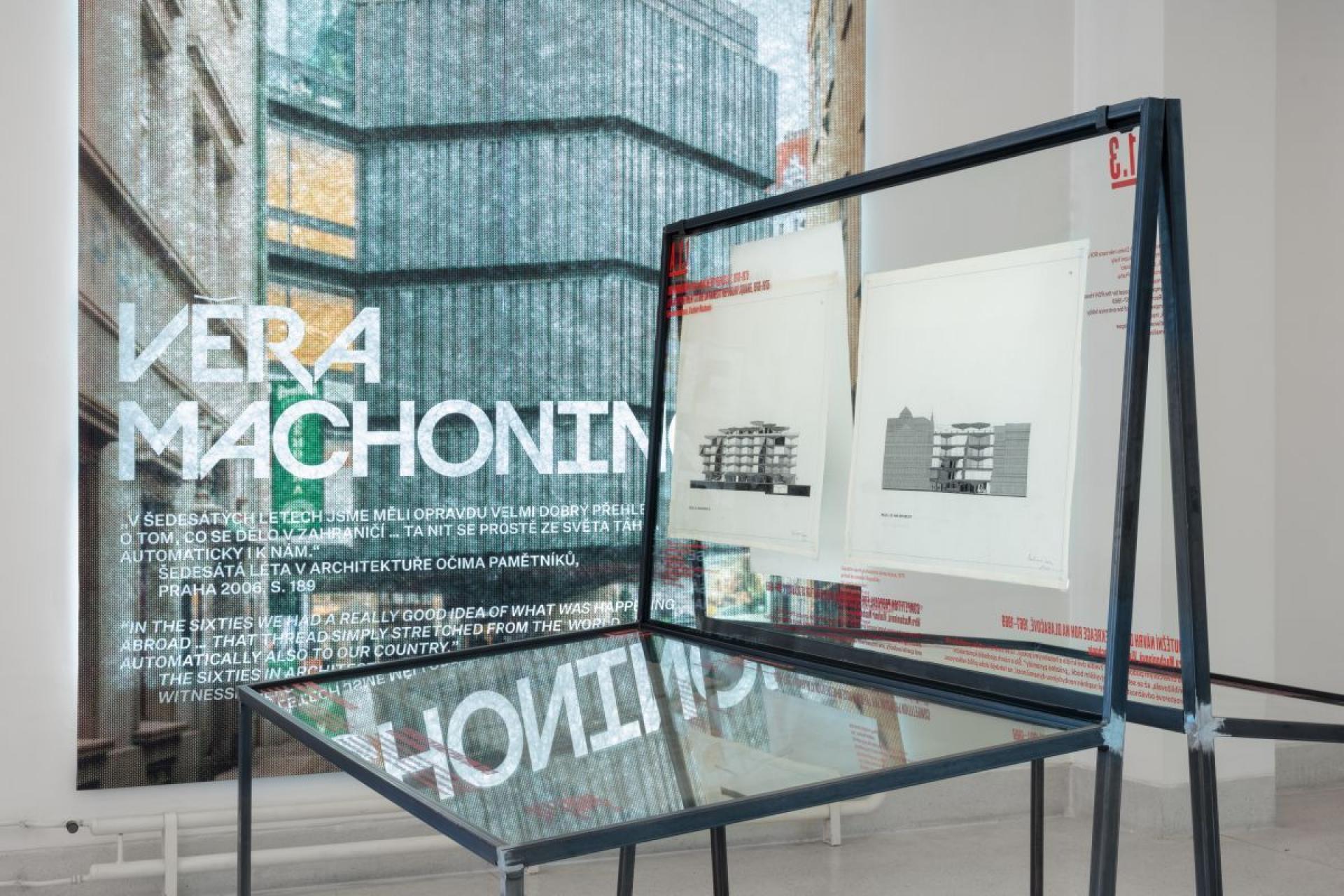

The exhibition | Photo © Katarína Hudačinová, the National Gallery Prague
In comparison, no large public building in Prague has been built since 30 years, what shows the shift of the capital flow with privatization. Nowadays, the real estate investors misuse the negative public opinion to demolish high quality buildings to acquire lucrative plots in the city centre for private investment. In many cases it would have been possible to reuse the brutalist buildings at a lower expense, like for example the Embassy of CZ in Berlin.
The National Gallery seems to be a prestigious place for the exhibition about the architecture of an era that is widely disputed and is also a strong institutional statement; how are Czech academics and professionals reacting to the events around the architecture of the 1960s, 1970s, 1980s?
HD: I very much believe in the power of the exhibition as a tool for mediation and education, but also bringing up controversial or uncomfortable topics. That is the position the National Gallery has. Its architecture collection is centred around post-1945 architecture so it is logical to present it in an innovative perspective. Brutalism has received international acclaim in architecture history since 2010s, so we have had many academic discussions, but to me it is important to bring the phenomenon to the public. It is interesting that the expression is the same in former East and West, the only difference is that in the former West the buildings like the MET Breuer are celebrated, while in the former East these buildings are admired by the professionals and despised by the wide public.
In most of our countries we see the profession and the public speaking out to protect some of these buildings, in Hungary this happened by the proposed demolition of Zoltán Gulyás’ Chemolimpx office building in the early 2010s, and more recently when the government announced the demolition of Csaba Virág’s soc-hi-tech Electric Power Distribution Center. There are similar stories in Czechia and Poland - how do you explain the public being so involved in these cases?
HD: Yes, there is an entire movement of active architecture historians, architects and interested public. David Crowley, the head of arts department of the NCAD in Dublin, is a great observer of these shifts, which demonstrate a renewal of the consciousness for public sphere and public spaces in general. So far the protests have been unsuccessful in confrontation with the investment pressures, a culmination point was the demolition of the Transgas building, public protests accompanied the demolition of Hotel Praha, and eventually rescued railway station in Havířov. Crowley says this a unique trait in Central Europe as he has not seen such engagement in the UK or Ireland. In Germany, the heritage protection of post-war buildings is really advanced by now, but there are not such strong public initiatives to me…
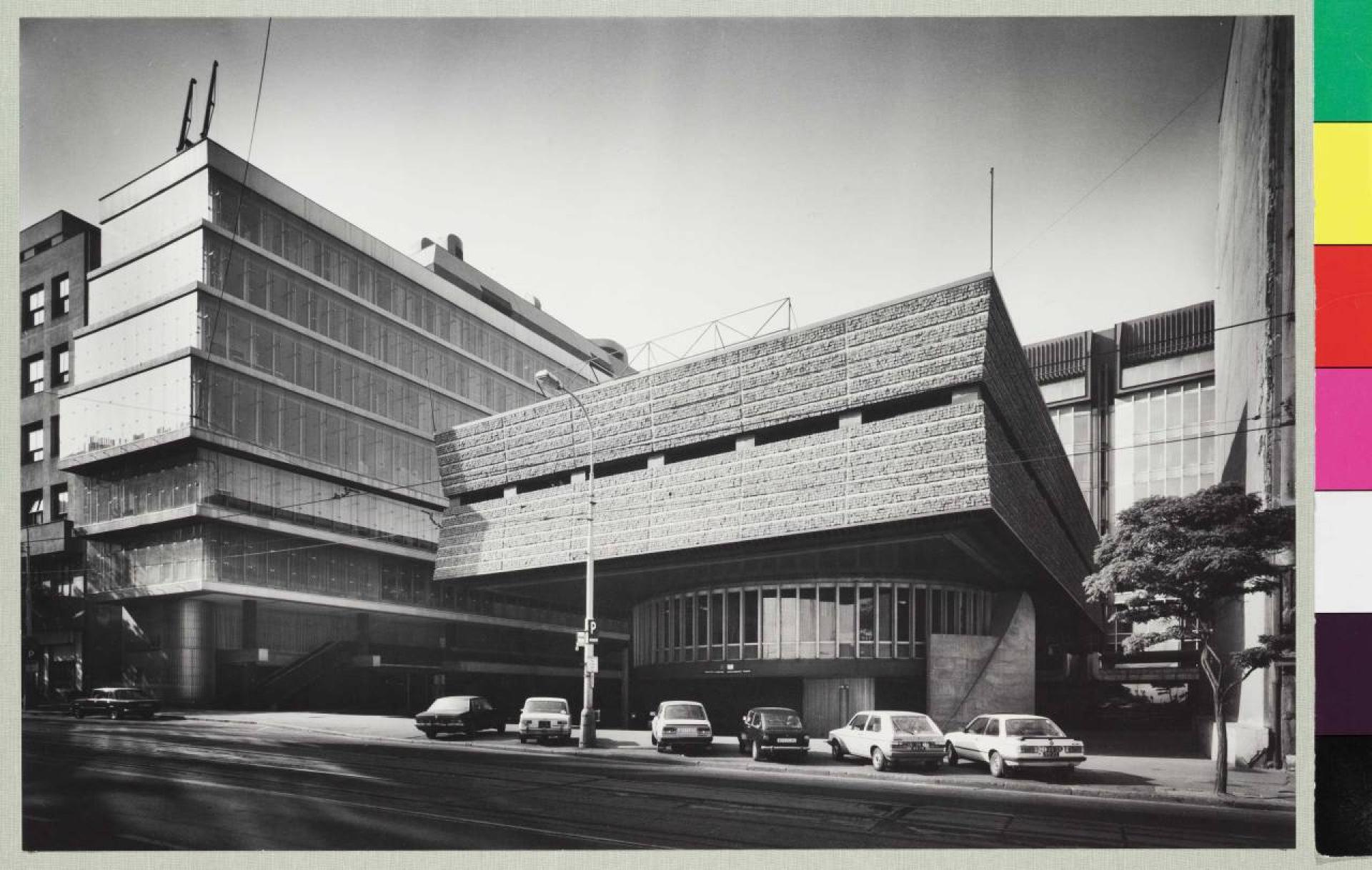
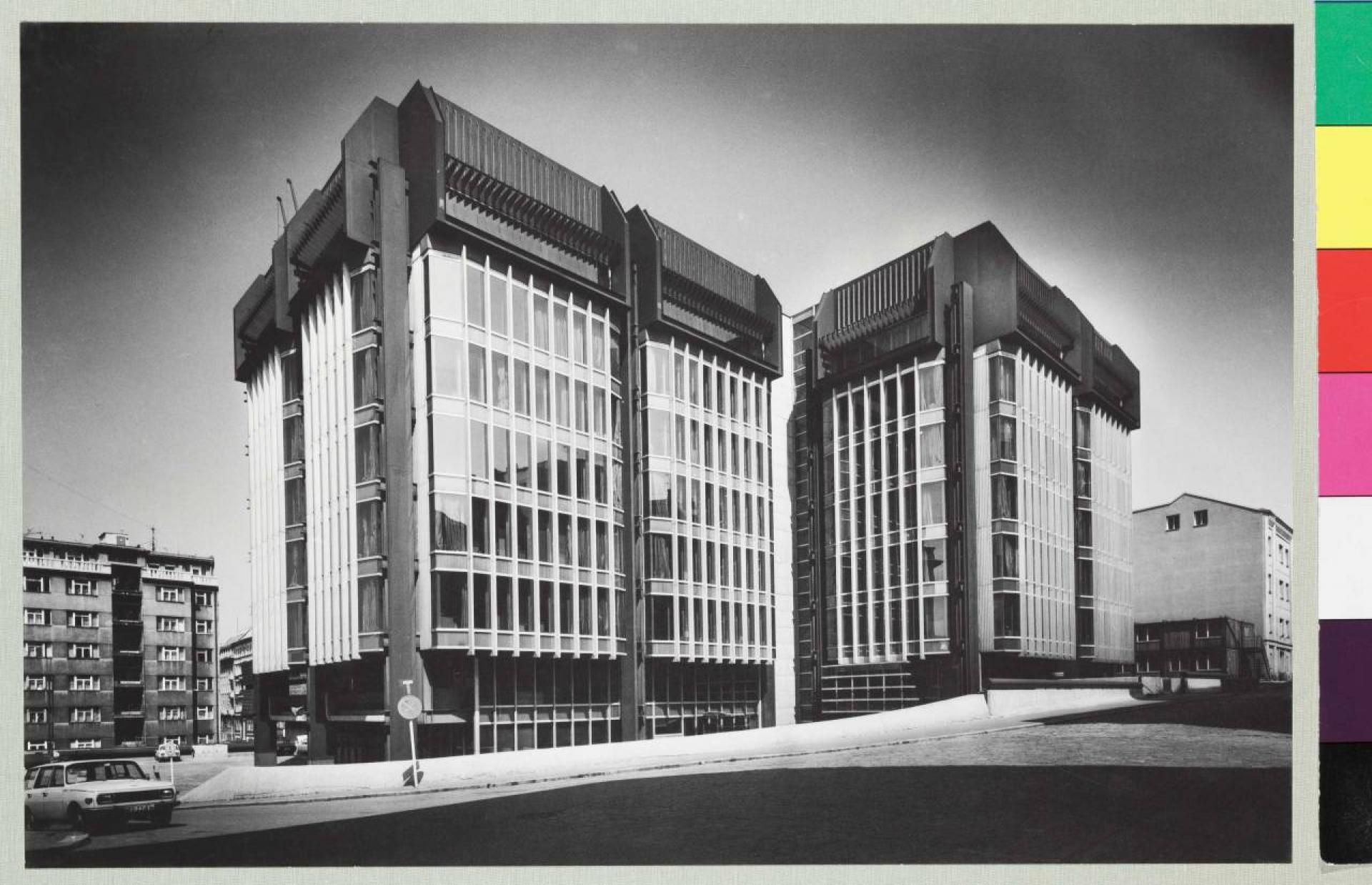
Transgas Complex by Ivo Loos, Jindřich Malátek, Václav Aulický, Jiří Eisenreich, Jiří Kozák, Jan Fišer (1966–1978) | Photo © Kamil Wartha, National Gallery Prague
Why did you choose brutalism as a specific style to sum up these buildings? Strictly speaking, the term is quite well defined and confined to a specific group of mostly British and American buildings, what is brutalism in your definition?
HD: The usual association is béton brut, with the main inspiration of Le Corbusier. At the same time, I took at hand Rayner Banham, who speaks about three criteria, in short – the figure, the revealed construction and authenticity of material, which would better comply with the notion of brutalism in variety. Also brutalism has been changing from the expression of the Smithson’s Hunstanton school, to let’s say Paul Rudolph. In such way brutalism became an international expression with multiple specifics.
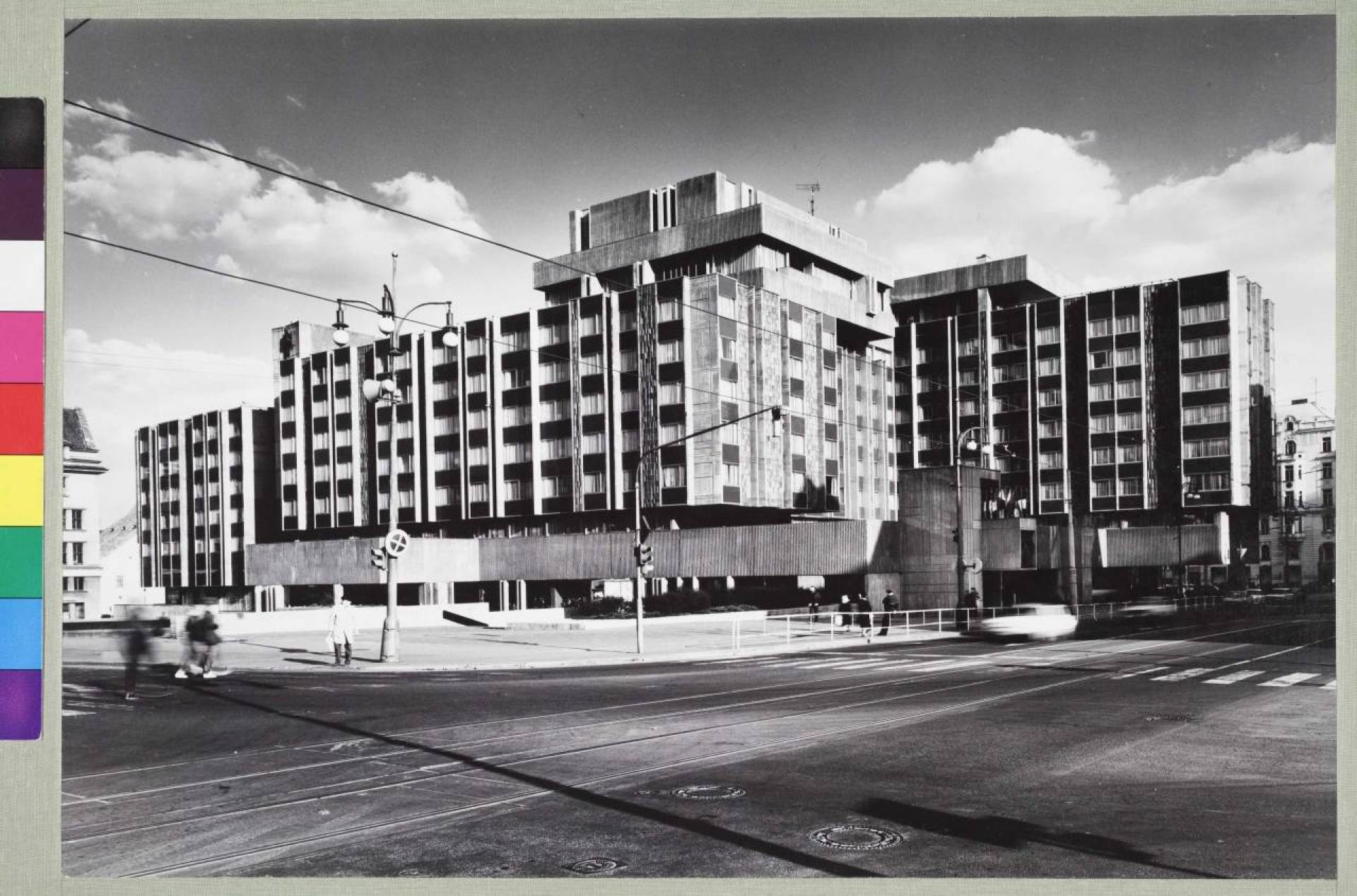
Hotel Intercontinental by Karel Filsak, Karel Bubeníček, Jiří Louda, Jaroslav Švec a kol. (1968–1974) | Photo © Kamil Wartha, National Gallery Prague
The notion of brutalism has been a subject of a dispute in the curatorial team with Petr Vorlík, Klára Brůhová (CTU Prague) and Radomíra Sedláková (NG Prague). We assumed the Czech architecture was influenced by brutalism, to a smaller or larger extent depending on every architect. Architecture of late modernism in Czech shows finer handling of material such as glass, mosaics, of wooden cladding, a variety of bright colours, that do not particularly express the notion of brutalism associated with rough concrete. The houses do in a way respect the scale of the surrounding city, are most often broken down in a composition of smaller volumes, reference bay windows of surrounding houses, etc.
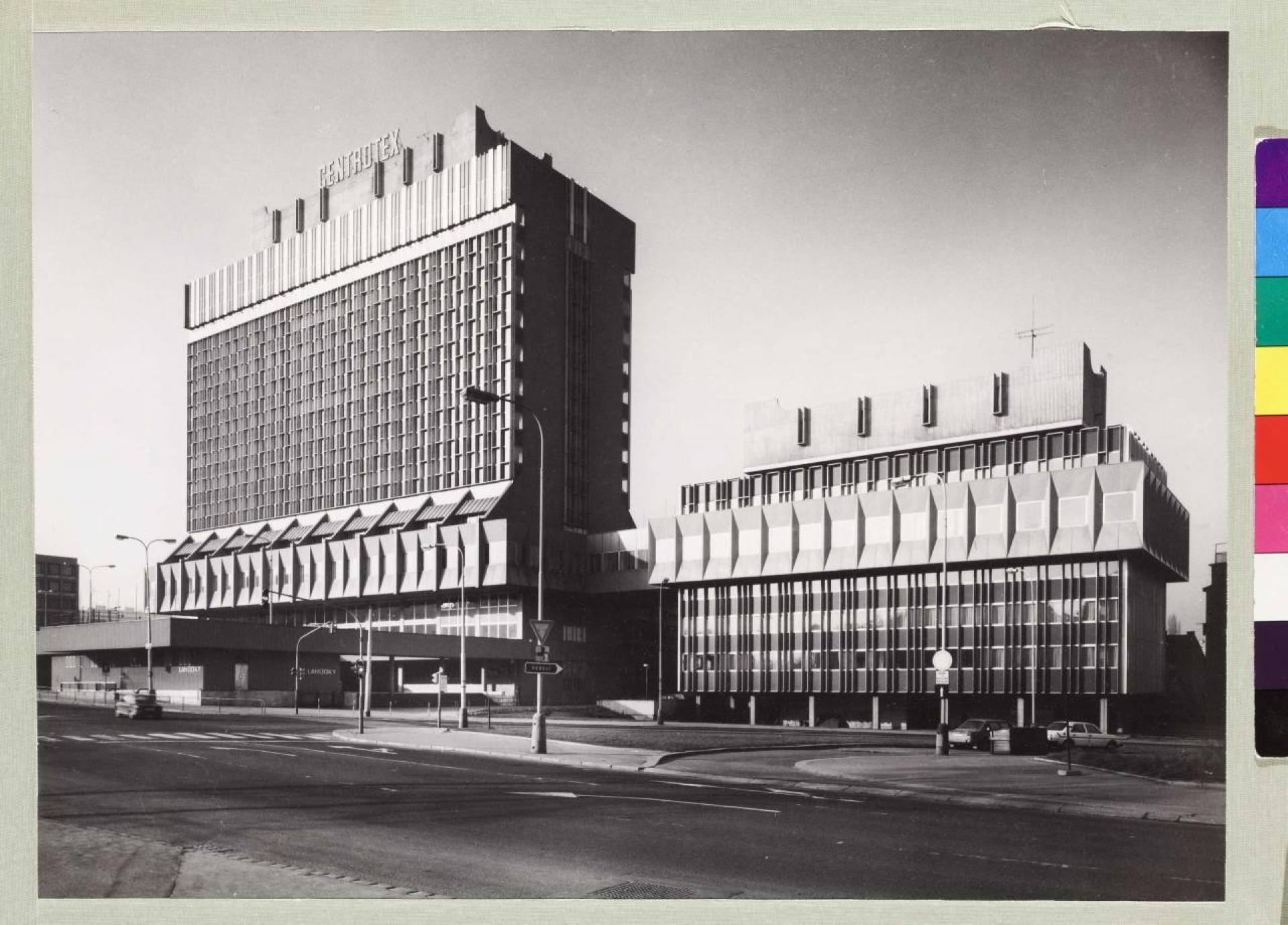
PZO Centrotex Building – Václav Hilský, Otakar Jurenka (1972–1978) | Photo © Kamil Wartha, National Gallery Prague
At the same time the label brutalism is in public drawn to all kinds of buildings, which have with little or nothing to do with late modernism, actually, are clad in stone. So as architecture historians we strived to differentiate and raise public awareness on the topic.
Is there a specific Czech brutalism? Are there any national or regional characteristics in this era?
HD: This is not an easy question. Brutalism was a global and a local phenomenon. Interestingly, in the Czechoslovak architecture we see magazines that iconic brutalist buildings were published, like La Tourette, or the architecture by Stirling in the 1960s and 1970s. So the information iron curtain was more semi-penetrable in terms of architecture knowledge and expression, like Ákos Moravánszky says. The regional specifics construction processes, the quality and variability of materials, which was lower in the former Eastern block, and also the public opinion which incorrectly associates the buildings with state socialism.
We are talking about the architectural production of an era that produced an incredible amount of buildings. How is it possible to create a canon for such a recent past and what do you think about the monumental protection regarding these buildings? What should be protected and how? Can you also name a few example, interesting buildings (and interiors) from Czechia?
HD: A unique example is the already heritage protected Kotva Department Store by architect’s team Věra and Vladimír Machoninovi.

Kotva department store in Prague. | Photo © Olja Triaška Stefanović
The former Federal Assembly is another iconic example of a daring construction originally intended for bridges. It encloses the former classical modernist stock exchange building and complements the ensemble anew. Interiors have unfortunately been refurbished and only very few items are present in the museums.
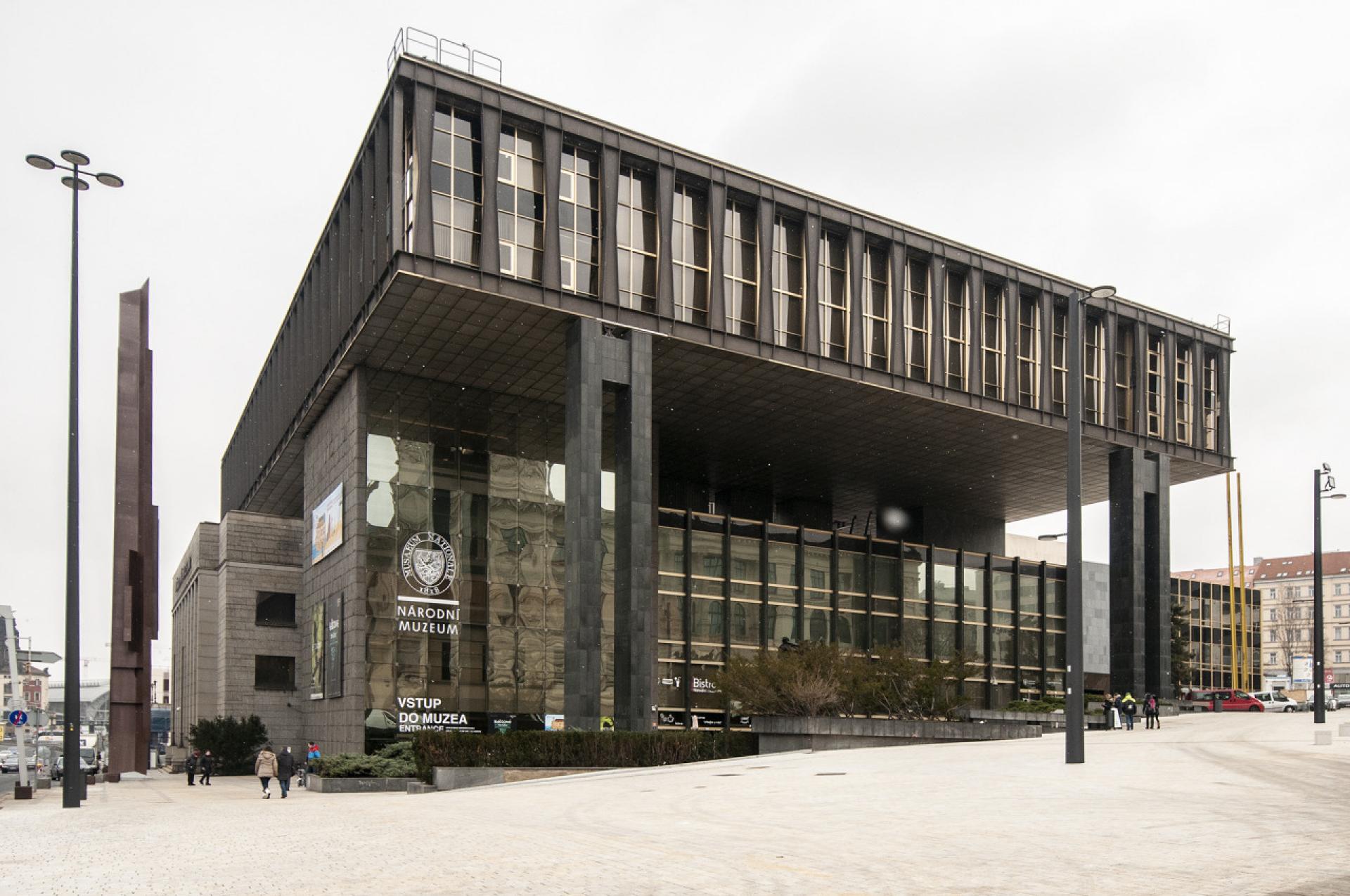
Former Federal Assembly Building Prague. | Photo © Olja Triaška Stefanović
A unique example is the Czech embassy in Berlin with intact interiors. A contested interior reconstruction is currently Hotel Thermal by Machoninovi in Karlovy Vary. At least five outstanding buildings have been demolished in Prague, countless have been refurbished. Only two above-named brutalist buildings are heritage protected, other like Hotel Intercontinental by Filsak, or Centrotex by Hiský, Motokov by Kuna should become protected as unique works of art and architecture.
___
Interview by Dániel Kovács and first published in Epiteszforum.
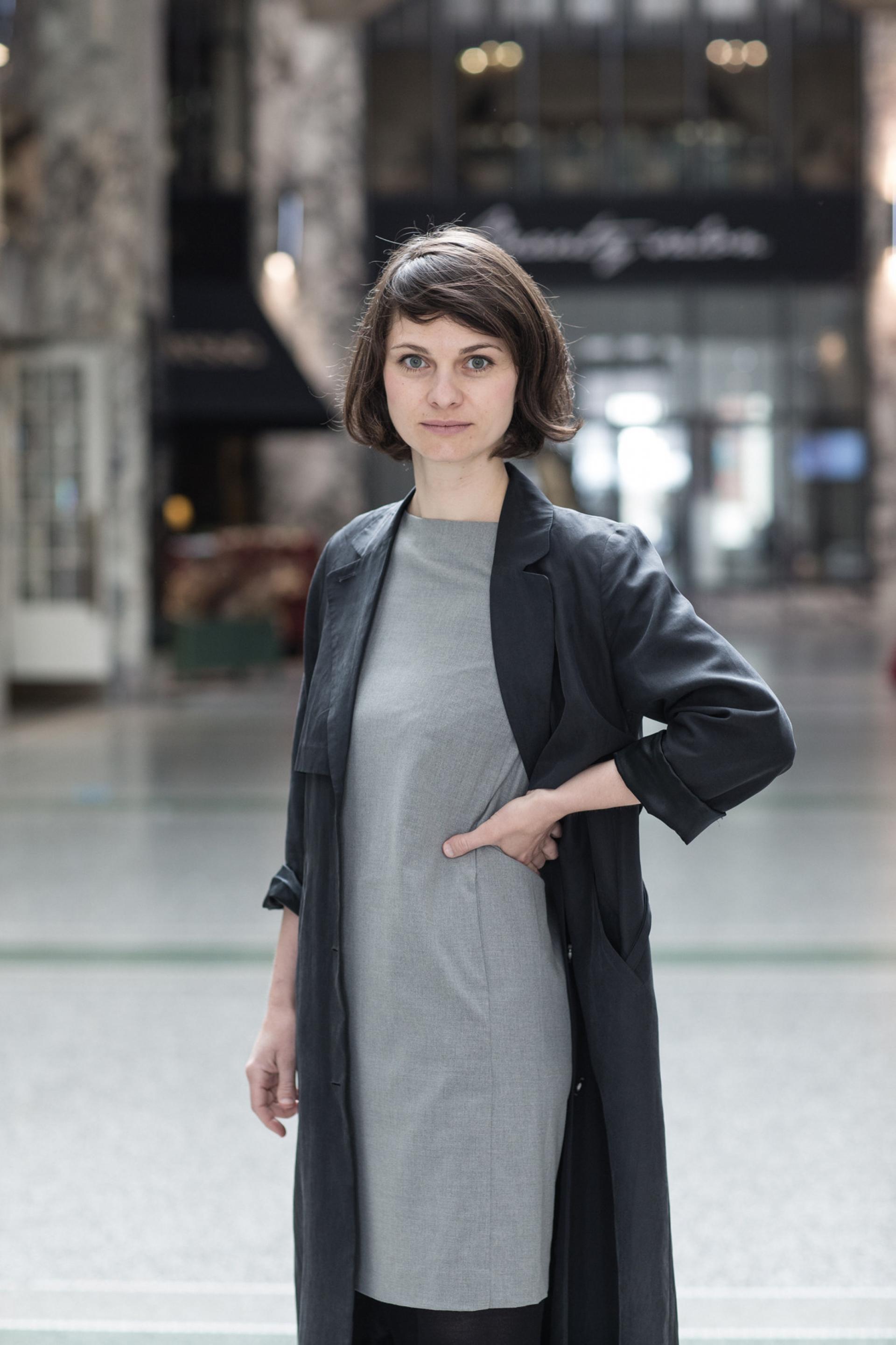
Helena Doudová is curator of the Architecture Collection of the National Gallery Prague. She gained curatorial and museum experience as research and curatorial fellow of the International Museum Program in the German Museum of Books and Writing in Leipzig in collaboration with the University of Erfurt and the German Federal Cultural Foundation 2016/2017, as a Robert Bosch Fellow at Architecture Museum of the TU Munich – Pinakothek der Moderne (2011–2012) and as an intern in the German Architecture Centre DAZ in Berlin (2013–2014). She initiated and curated NO DEMOLITIONS! Forms of Brutalism in Prague, Baugruppe ist super!, Image Factories: Infographics 1920-1945: Fritz Kahn, Otto Neurath. She is a PhD candidate at the Institute of Art History of the University of Zurich. She was awarded DAAD research scholarship and Aktion Österreich scholarship. | Photo © Jan Faukner